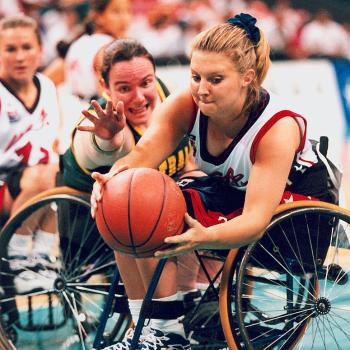I was chatting with Rebecca Frech the other week, who is both blessedly familiar with intense fitness trainfully, and dreadfully familiar with chronic illness. One of the ironies of my own recent illness, I told her, was that some of the most useful information came from articles geared towards serious athletes. One of those useful clues has been information on heart rate monitoring as a way to avoid overtraining.
The situation normal people face: In the quest to get fit, you might push yourself even when you ought to be resting, and sabotage your race results in the process. (I suspect among ordinary pleasantly-plump middled-aged weekend warriors, it’s more common to be waylaid by injury than exhaustion. But among competitive racing enthusiasts, yes, this happens.)
The situation people with chronic illness face: Every day is a workout. Hey! I took a shower! Look at me exercising!
Challenge #1: Exercise — intentional, targeted, go-to-the-gym type exercise — really does help with many chronic conditions.
Challenge #2: You want to do as much as you can in your ordinary life. Put away laundry, go to the kids’ soccer game, all that stuff.
Challenge #3: It can be very hard to know whether to get up and push yourself, or whether to kick back and rest.
Fatigue is a treacherous clue. You might feel tired due to depression, or discouragement, or boredom — maybe getting up and doing something is the solution. You might feel ready to keep going, when really you should rest, because you’re excited, or committed, or passionate about whatever’s before you. This is exactly the same conundrum elite athletes face, only on a micro-scale.
So the thing I’ve been experimenting with — your results may vary and please oh please talk to your doctor before you try this at home — is using my heart rate as an indicator of whether to be relatively active, or whether to stop everything and spend a day putting my feet up. Three useful measures:
- At-rest heart rate. If I’m laying down, relaxed, my heart rate ought to come down to what I’ve identified as my usual at-rest heart rate. When I’ve been doing too much, that at-rest rate will gradually creep up — I see about a ten-point spread between my usual at-rest rate and my “What the heck have you been doing, Jennifer?!!” rate.
- Heart rate during activity. If I’m up and doing some normal activity, with proper rest my heart rate will rise to a fairly predictable level. (Varies depending on the activity.) When I’m overtired, my heart rate will rise signicantly higher (ten, twenty, maybe even thirty points higher) for the same intensity of activity.
- Heart rate recovery. It’s normal for your heart rate to increase with activity. When you lay back down, it should go back down to the at-rest rate fairly quickly. When it takes a long time for my heart rate to slow down again, that’s a sign I need more rest.
How do you get all these measures? By taking your pulse. If you have a heart rate monitor, you could use that. I don’t, but I do own a cheap discount-pharmacy pulse oximeter, and that’s convenient for taking lots of measurements. Or you can just do it the old fashioned way with your finger and an analog clock with a sweep-second hand, which I also sometimes do.
[Tip: Once you have a general idea of your usual heart rates, you can make some short cuts for taking your pulse — ie, you can quickly know your heart rate is below 80bpm if it beats less than 20 times in fifteen seconds. If it beats more than 30 times in 15 seconds, you know it’s over 120 bpm.]
Depending on your illness, you’ll probably have some other symptoms you need to watch as well. I can say that since I’ve started using my heart rate as a guide to overall fatigue, I’ve been able to be much more active overall, and when I do more than I should, the recovery time is much less than it had been previously.
Obviously the ideal is to not get overtrained, but to figure out a lifestyle that’s exactly right, neither too much nor too little. But given that the nature of illness is constant change, this might be helpful for a few readers. Good luck!
Related:
Rebecca Hamilton on her experience with exercise and rheumatoid arthritis.
The Wall Street Journal on exercise in chronic heart failure.
Circulation on exercise and pulmonary hypertension.
Obesity Panacea (an exercise physiology blog) on exercise and blood sugar levels, and on the difference between “active” and “sedentary”.












